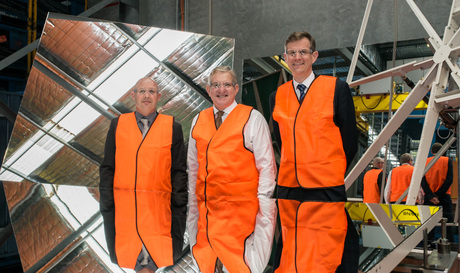Australian solar tech to shine in Japan

Mitsubishi Hitachi Power Systems (MHPS) has received Japanese Government funding to establish a field of 150 heliostats in Yokohama, which will be used to run research projects utilising solar thermal tower technology. The heliostats have been designed by CSIRO and are being constructed by South Australian manufacturing company Heliostat SA.
Heliostats are special mirrors whose angles are under computer control, each of which rotates accurately to reflect and concentrate sunlight onto a receiver on top of a tower. The concentrated sunlight can be used to create superheated steam, which can then be used to drive a turbine for generating electricity.
Energy can be stored cheaply as heat in solar thermal systems, giving the technology great potential for medium- to large-scale power. In addition, the CSIRO heliostat design is smaller than conventional heliostats and uses an advanced control system to get high performance from a relatively inexpensive design.
“To have CSIRO’s heliostats selected by MHPS, a global leader in energy, proves that our technology is up there with the best in the world,” said Dr Alex Wonhas, CSIRO’s energy and resources executive director. “Our successful collaboration with Heliostat SA also shows the benefits of science working closely with industry to create value for the Australian economy.”
Heliostat SA was created with the support of four South Australian companies: Precision Components (a company heavily involved in the car industry), The University of South Australia, May Brothers and Enersalt. Precision Components’ diversification into renewable energy was enabled by $1 million of Australian Government funding from the Automotive Diversification Programme.
Agreement unites clean energy providers
Wind and water energy come together as Aula Energy signs a long-term power purchase agreement...
Alta project makes existing diesel trains electric
Alta Battery Technology's BET system has demonstrated that practical, scalable rail...
TagEnergy to build a BESS at Golden Plains Wind Farm
Australia’s largest wind farm will soon have a battery energy storage system (BESS).










